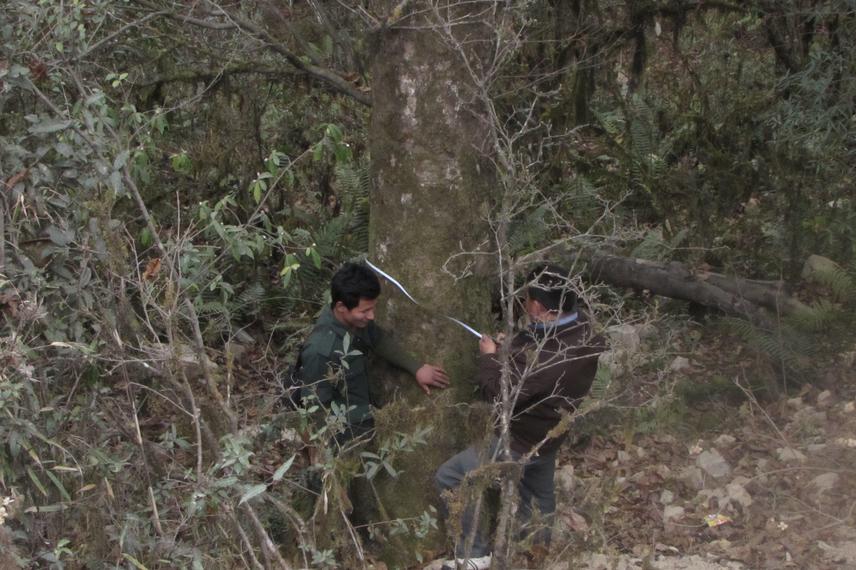Karma Tshering
The current project will focus to investigate the adaptation of tertiary relic plant of Tetracentron sinense through dendroclimatology in Bhutan Himalaya. It will enable to determine the regeneration status of species, environment attributes, associated floristic diversity and to acquire people’s perception of the Tetracentron sinense and to transform into conservation action.

Coring in the field.
Earth’s climate has been persistently changing due to enhanced anthropogenic activity and added to the impact of natural forcing system on climate tremendously. (Jansen et al. 2007) Tetracentron sinense is a monotypic genus in family Tetracentraceae and, now endemic to East Asia (Tang et al., 2013). Today the tertiary relict as well as endemic plant is highly vulnerable and in high risk of extinction. The species is vessel less and rare in angiosperm which received much taxonomic attention due to its primitiveness. (Chen et al., 2007). The rare species is present only in few locations in Bhutan. The information on this species is scanty affected by habitat destruction and has poor ability to regenerate. According to the paper by (Fu, 1992) cited in (Xiaohong et al., 2013) is stated as ‘rare’ in International Union for the Conservation of Nature (IUCN) and listed in Appendix III in CITES (Convention on International Trade in Endangered Species of Flora and Fauna)
Targeted sampling will be done for coring and to acquire ecological habitat. Tree ring signalled the past climatic conditions and will continue to understand future climate condition on the environment through the principle of Uniformitarianism. Until now, no tree ring investigation is done across the world for Tetracentron sinense which exhibit distinct rings. Dendroclimatology is widely practiced technique for climate study from tree rings. (Fritts, 1976). But it will be new science to developing country, Bhutan.
COFECHA and ARTSAN programme will be used for cross-dating the samples. Statistical test of ANOVA, correlation and logistic regression will be used against the meteorological data. Tetracentron sinense conservation is of great concern for Bhutan and for world, because of their rarity and their phylogenetic traits. The ultimate goal is to educate and transmit information to the community, government agencies as well as to Non government agencies about the habitat management and to increase the capacity and practical knowledge on conservation of these species through awareness campaigns. The project will enable to validate the species in other places of similar environment for incorporation for conservation. Awareness on demonstration and techniques of nursery raising and artificial propagation will be imparted to enable to adopt by farmer to avoid extinction of the species.
In order to preserve the ancient genetic diversity of this phylogenetically distinctive and increasingly threatened species, information on ecological and adaptation with climate change in Bhutan is urgently required for critical conservation policy.